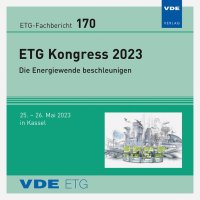Expansion of the energy policy triangle as a result of the expansion of the German Energy Industry Act
Conference: ETG Kongress 2023 - ETG-Fachtagung
05/25/2023 - 05/26/2023 at Kassel, Germany
Proceedings: ETG-Fb. 170: ETG Kongress 2023
Pages: 8Language: englishTyp: PDF
Authors:
Jacobsen, Benjamin (Chemnitz University of Technology, Chair of Power Systems and High-Voltage Engineering, Germany)
Abstract:
Electrical energy is a fundamental commodity that serves to cover basic needs. This is reflected, among other things, in the extensive regulations and the classification of the resources required for the generation, transmission and distribution of electrical energy as critical infrastructure. Furthermore, the high importance of a price-worthy supply of electrical energy becomes clear from the fact that it is a regulated liberalized market. This tension between free competition on the one hand and a regulated market on the other hand creates challenges when making energy management decisions. In order to be able to use a tool for objectification when weighing up alternatives, the energy policy triangle of targets was developed and has established itself since the turn of the millennium. Since that time, the Energy Industry Act, as the regulatory basis for energy industry decisions, has changed and the purpose of the Act has been expanded. As a result, it is necessary to adapt the energy policy triangle in such a way that there is a high degree of congruence between the purpose of the Energy Industry Act and the energy policy triangle as a tool. For this purpose, the triangle of targets is extended by two dimensions, so that the methodical advantages of three corresponding dimensions each by the use of ternary diagrams continue to be effective, the form of a double tetrahedron is resorted to. Nevertheless, a certain order and methodology must be used in the evaluation or weighting of the individual dimensions, since ultimately all five objectives are interrelated. This methodology as well as the derivation of an extension of the triangle of targets to a double tetrahedron of targets represent a high added value and should be used in future energy management decisions.


